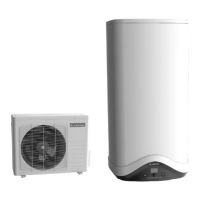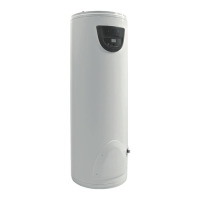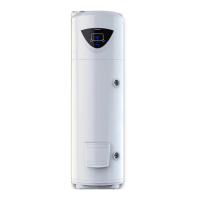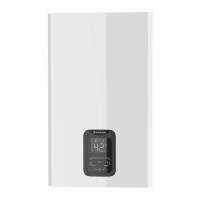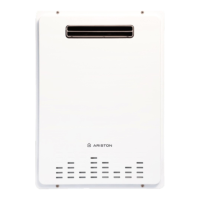Heat pump water heater – INSTALLATION
37
Preparing of the refrigerating pipes
WARNING! Before carrying out any installation check the following:
a)
Use only copper tubes for air conditioners type (insulated copper tubing suitable for the refrigeration and the
conditioning, copper thickness al least 0.8 mm, insulation thickness at least 6 mm)
b)
Provide a path of the pipes as short and simple as possible (maximum length 8
provide a path that may obstruct the access t
o the cap and the removal of flange. See Figure 6
c)
Protect the pipes and cables to avoid damage
WARNING! The refrigerant lines, and fittings fo
r connection must be insulated to avoid dangerous
burns, loss of performance and product malfunction. Ensure the insulating sheath of the tubes
through fastening clamps to prevent it from moving.
Remove the locking of the tubes shortly before making the connection:
absolutely must prevent moisture or dirt
ingress.
If a pipe is bent too often becomes hard: Do not bend more than 2 times in the same section. Unwind the
hose without pulling (see fig. 7).
Connecting the internal unit
a)
Shape the pipes according to the path
b)
Remove the brass plug on the indoor unit and store them (check that no impurities are left
c)
Cut the pipe to the fixed length, with a pipe cutter, avoiding any deformation
d)
Remove burrs with pipe reamer avoiding to get impurities inside (keep dow
e)
Insert the threaded brass flare nuts on the pipes in the correct direction
f)
Insert the tube into the flaring tool and make the
flange at the end of the connecting pipe, as in
table (see fig. 8):
ø NOMINAL ø EXTERNAL THICKNESS mm
DIMENSION “A” mm
FLARING TOOL
g)
After confirming that there are no wrinkles or tears on the flare, connect the pipes using two spanners, being
careful not to damage
the pipes. If the force is insufficient, then there will be leaks. Although the force is
excessive, there may be losses because it is easy to damage the flange.
The safest method is to tighten the
connection by using a spanner and a torque wrench, in this case use the table:
Tightening torque [Kgf x cm]
Corresponding force (with 20 cm spanner)
h)
We recommend to leave
a few inches of copper pipe, for any subsequent operations in
Connecting the external unit
Remove the gas connections plastic cover, screw the flare nuts to connect
the outdoor unit with the same
described for the internal unit.
Use only copper tubes for air conditioners type (insulated copper tubing suitable for the refrigeration and the
m of fall). Do not
o the cap and the removal of flange. See Figure 6
r connection must be insulated to avoid dangerous
burns, loss of performance and product malfunction. Ensure the insulating sheath of the tubes
absolutely must prevent moisture or dirt
If a pipe is bent too often becomes hard: Do not bend more than 2 times in the same section. Unwind the
Remove the brass plug on the indoor unit and store them (check that no impurities are left
)
flange at the end of the connecting pipe, as in
dicated in the
After confirming that there are no wrinkles or tears on the flare, connect the pipes using two spanners, being
the pipes. If the force is insufficient, then there will be leaks. Although the force is
The safest method is to tighten the
Corresponding force (with 20 cm spanner)
a few inches of copper pipe, for any subsequent operations in
near the taps.
the outdoor unit with the same
method
